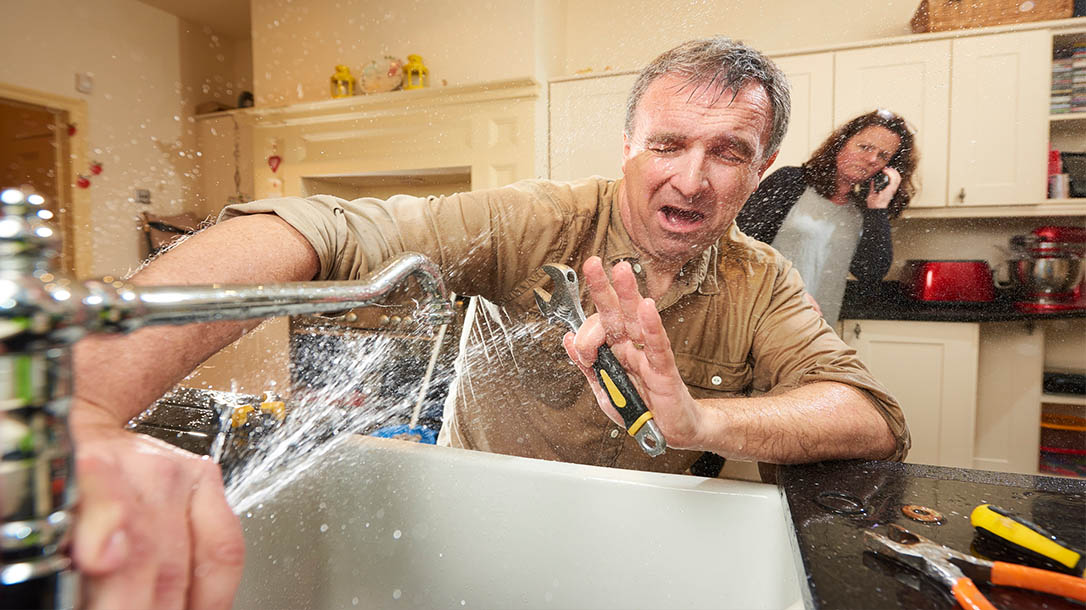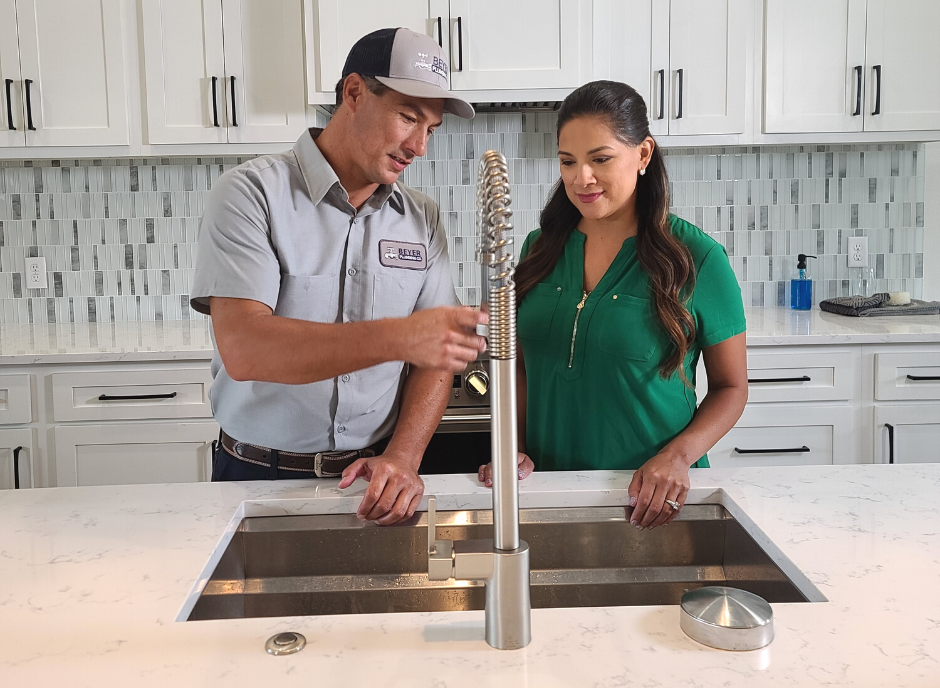Were you interested in facts and techniques about Leaky Faucets: Why They Happen & What to Do About Them?

Leaking taps might seem like a small inconvenience, but their impact goes beyond simply the inconvenience of the sound. From wasting water to incurring unnecessary financial expenses and health threats, disregarding a dripping faucet can lead to various consequences. In this short article, we'll delve into why it's important to address this usual home problem immediately and efficiently.
Wastage of Water
Environmental Impact
Dripping taps contribute considerably to water wastage. According to the Environmental Protection Agency (EPA), a single faucet leaking at one drip per secondly can throw away more than 3,000 gallons of water each year. This not only strains water resources but also affects ecosystems and wild animals dependent on them.
Step-by-Step Overview to Taking Care Of a Dripping Tap
Devices Needed
Prior to trying to repair a dripping tap, gather the needed devices, consisting of a flexible wrench, screwdrivers, substitute components (such as washing machines or cartridges), and plumber's tape.
Common Faucet Issues and Their Solutions
Determine the kind of tap and the details problem creating the drip. Usual issues include damaged washers, rusty valve seats, or faulty O-rings. Describe supplier guidelines or online tutorials for detailed support on repair services.
Financial Costs
Raised Water Costs
Past the ecological influence, leaking taps can pump up water costs substantially. The built up wastage over time translates right into higher utility expenses, which could have been prevented with timely repair services.
Prospective Building Damage
Furthermore, extended dripping can lead to harm to components and surface areas surrounding the faucet. Water buildup can create discoloration, rust, and also structural concerns if left unattended, leading to extra repair costs.
Health Problems
Mold And Mildew and Mold Development
The consistent visibility of wetness from a trickling faucet creates a perfect atmosphere for mold and mildew and mildew growth. These fungi not just jeopardize interior air high quality however likewise posture wellness risks, particularly for individuals with respiratory conditions or allergies.
Waterborne Diseases
Stagnant water in trickling taps can end up being a breeding place for bacteria and various other pathogens, increasing the danger of waterborne diseases. Contaminants such as Legionella microorganisms thrive in stagnant water, potentially bring about major ailments when ingested or inhaled.
Do it yourself vs. Expert Fixing
Benefits and drawbacks of Do It Yourself Fixing
While some might try to repair a leaking faucet themselves, do it yourself repair services include their very own set of obstacles. Without proper knowledge and tools, do it yourself attempts can worsen the concern or result in insufficient repair services, prolonging the trouble.
Advantages of Employing a Professional Plumber
Hiring a specialist plumber makes certain that the underlying root cause of the leaking tap is attended to properly. Plumbings have the know-how and equipment to diagnose and repair faucet concerns effectively, saving time and lessening the threat of additional damage.
Environmental Duty
Specific Contribution to Conservation
Taking obligation for repairing dripping faucets lines up with broader initiatives toward water conservation and environmental sustainability. Every person's actions jointly make a substantial effect on maintaining valuable resources.
Lasting Living Practices
By focusing on timely fixings and adopting water-saving practices, people contribute to sustainable living practices that benefit both existing and future generations.
Preventive Measures
Regular Upkeep Tips
To prevent trickling faucets, execute routine upkeep such as cleansing aerators, inspecting for leakages, and replacing worn-out parts immediately. Furthermore, take into consideration setting up water-saving tools or upgrading to a lot more effective fixtures.
Importance of Prompt Services
Resolving trickling taps as quickly as they're discovered prevents additional water waste and possible damage, inevitably conserving both water and cash over time.
Impact on Property Value
Perception of Well-Maintained Residential Or Commercial Property
Maintaining a residential property in good condition, including dealing with upkeep issues like leaking faucets, enhances its perceived value and worth among possible buyers or tenants.
Influence on Resale Worth
Characteristics with properly maintained plumbing fixtures, consisting of taps, command greater resale values in the real estate market. Resolving dripping taps can add to a favorable impression throughout home assessments and negotiations.
Verdict
Attending to a trickling tap surpasses simple convenience; it's an essential action towards saving water, reducing monetary prices, and protecting wellness and property. Whether with DIY repair work or specialist assistance, acting to deal with leaking faucets is a small yet impactful method to advertise responsible stewardship of sources and add to a much healthier, extra sustainable future.
How to Fix a Leaky Faucet: Step-by-Step Repair Guide
A leaky faucet may seem like a simple annoyance, but if it's not fixed promptly, that leak could cost hundreds to potentially thousands. From water damage to mold, mildew, and high water bills, even a tiny leak can be catastrophic if left unattended. Damage like this can even affect the overall value of your home, so it's important to take the right approach for leaky faucet repair. You may need the help of a plumber in some cases, but we've got a few tips you can try on how to fix a leaky faucet before calling the pros.
Four Faucet Types
When you're learning how to fix a leaky faucet, the first step is knowing what kind of faucet you're working with! There are four common types.
Cartridge Faucets
Cartridge faucets come in one- or two-handled varieties. In one-handled cartridge faucets, hot and cold water combines in a single cartridge. In the two-handled versions, hot and cold water are controlled separately and mixed in the faucet.
Ball Faucets
Ball faucets have a single lever you push up and down to adjust the pressure and rotate to change the temperature. A slotted metal ball controls the amount of water allowed into the spout.
Compression Washer Faucets
They're the oldest type of faucet, but they're still used in many homes — especially older ones. Compression faucets have two separate handles that, when turned, raise or lower the washer that seals a water valve. This valve stops water from flowing through the faucet when it is turned off.
Disc Faucets
Disc faucets rarely need to be repaired due to their maintenance-free design. The water flow is controlled by two discs — the upper one raises and lowers against a fixed lower disc, creating a watertight seal. If your disc faucet starts leaking, you may need to replace the seals or clean residue buildup from the inlets.
Fixing a Leaky Faucet
Step 1: Turn Off the Water
Whether you're learning how to fix a leaky bathtub faucet or how to fix a leaky kitchen faucet, always turn off the water supply to your working area when you're fixing a leak. The last thing you want is a flood added to your list of things to fix.
Look for the shutoff valves below your sink or around the tub and turn them clockwise to stop the water flow. If your faucet doesn't have shutoff valves, you may need to turn off the water for the whole house. Check to make sure it's off by turning the faucet on. If nothing comes out, you're ready to start the repair.
Step 2: Take Apart the Faucet
How you disassemble your faucet depends on the type of fixture you have. You can use a flathead screwdriver to remove the caps on top of the handle or handles for cartridge and compression faucets. Inside, you should see handle screws. Unscrew these with a screwdriver to remove the handle.
Disc- and ball-style faucets will typically have an inlet screw near the handle, and removing that will reveal the interior of the faucet.
Detach the Valve Stem
For cartridge- and compression-style faucets, you'll see the inner valve stem or cartridge once you remove the faucet handles. If you have a compression faucet, unscrew the brass valve stem. If you have a cartridge faucet, pull out the cartridge. If your cartridge has been in place for a while, it may require some tools or extra force to remove it due to mineral deposits.
Examine and Replace Parts
Once you've removed the parts, check them out to confirm what needs to be replaced. You may see corroded rubber washers, O-rings, stems, or cartridges. On a ball-style faucet, check the seats and springs for damage.
If you need to repair a leaky disc faucet, check the inlet and seals on the lower disc.
Once you determine what parts must be replaced, visit your local hardware store. Bring the damaged parts with you to ensure you can purchase the correct components to replace them.
Clean Valves and Faucet Cavity
If you've removed a stem or cartridge, you may notice mineral buildup in the faucet's threads. Use white vinegar to clean the valve seat by soaking it for a few minutes, then scrub it away with a soft toothbrush and rinse with warm water. You can also clean the interior of the faucet in the same way.
Reassemble the Faucet
Once your faucet is cleaned and the required parts have been replaced, it's time to reassemble it. Put the pieces back together and slowly turn the water supply back on. Doing this slowly is crucial because too much initial water pressure can damage the new hardware you've just installed.
https://homewarranty.firstam.com/blog/how-to-fix-leaky-faucet

As a fervent person who reads about Why Is It Important To Fix Your Leaking Tap/Faucet?, I assumed sharing that excerpt was important. You should take the opportunity to distribute this article if you appreciated it. Thanks for being here. Come back soon.